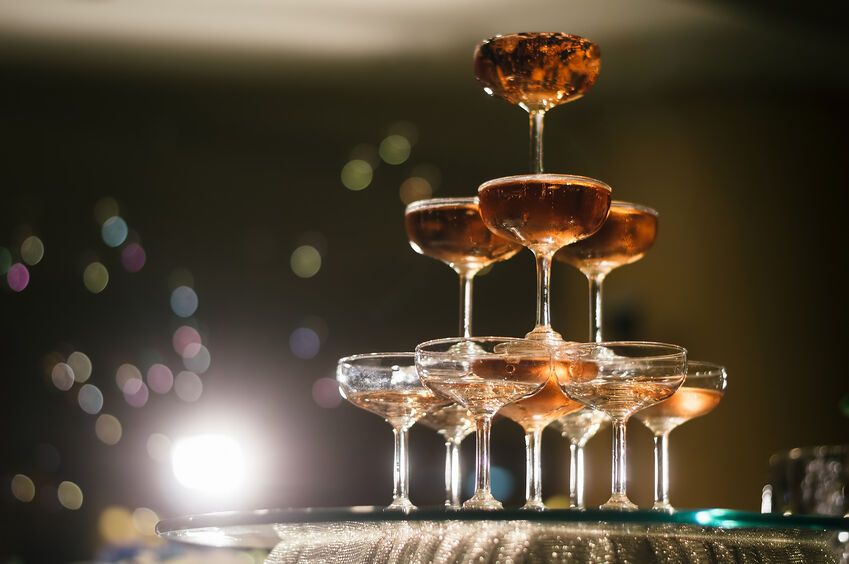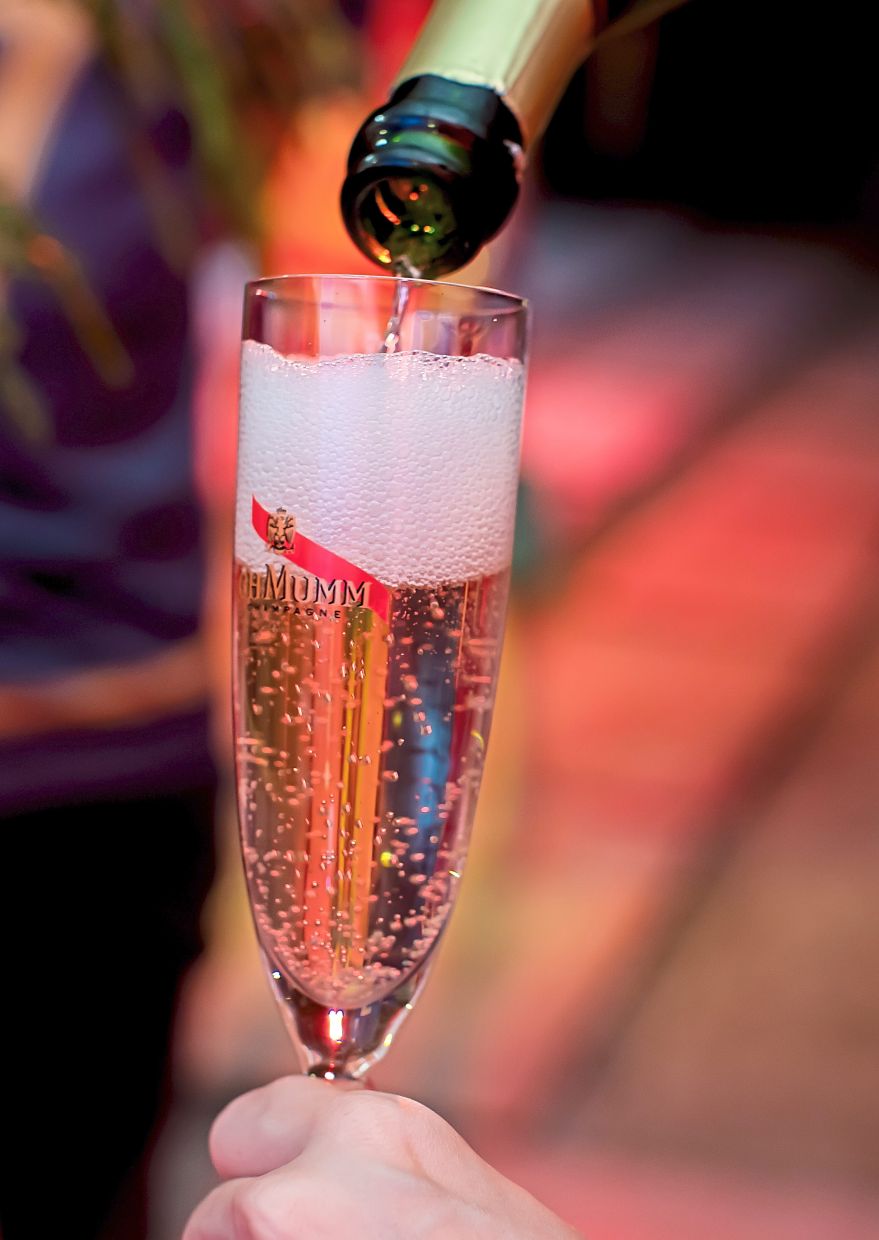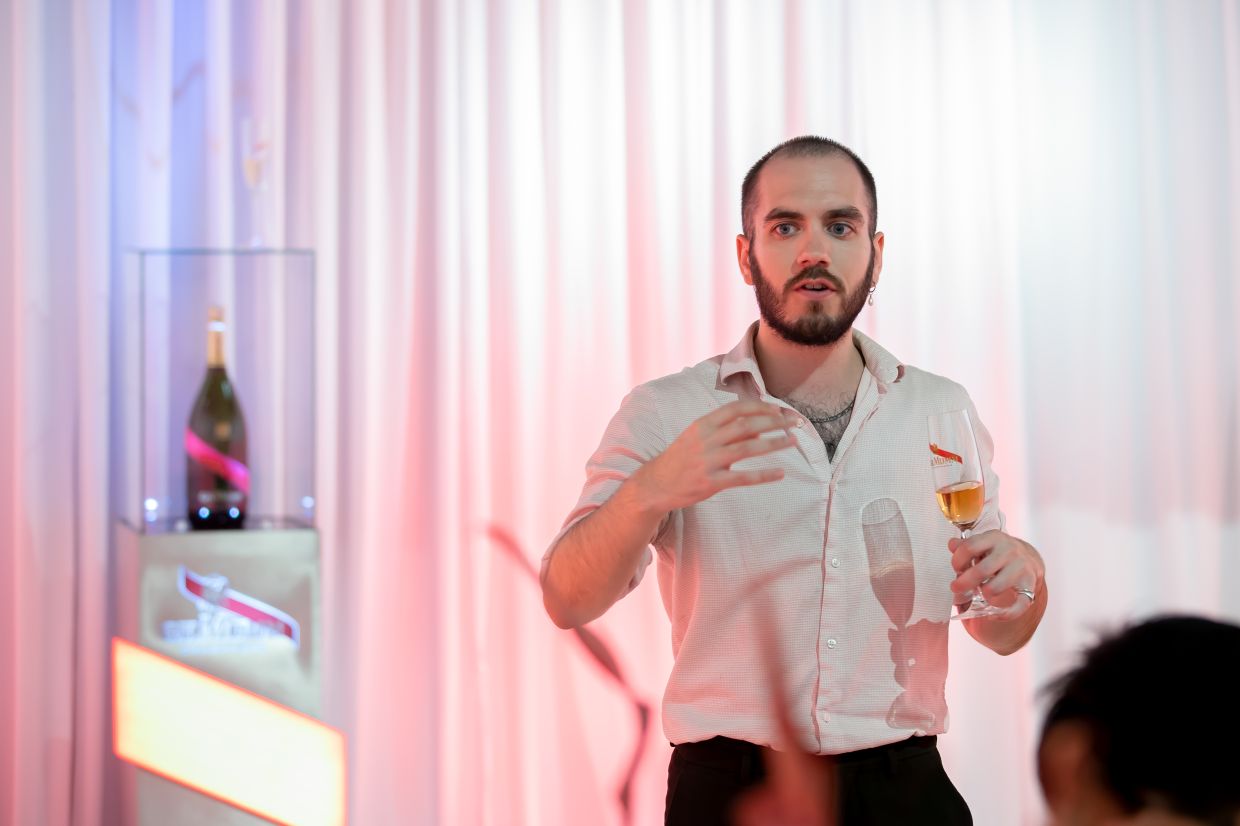November 30, 2022
KUALA LUMPUR – Can the shape of a glass really change the taste and flavour of a champagne? Does the weight, look and feel of a glass influence the way your brain perceives the flavours of a wine?
That was the question posed to guests at the recent Mumm Taste Encounters event by champagne house G.H. Mumm recently.
Now, I’ve already attended tastings of whiskies, spirits, and even beers that have used glasses of different shapes and sizes, each one influencing the taste and sometimes noses and palates of the liquid itself. But I’ve never really tasted champagne in anything other than a regular champagne flute or a wine goblet.
Here’s a fun fact though – in the past, people used to drink champagne out of a coupe glass. Yes, those short glasses with a curved, shallow bowl that is more commonly used for cocktails these days.
According to an article by Difford’s Guide, the coupe (pronounced “koo-pay”) was designed in England in 1663 as a champagne glass, and was actually still popularly used for champagne up till the 1960s.
People soon found that the broader surface area of the coupe tends to make the champagne bubbles go flat rather quickly, so it was gradually replaced with the flute.
The coupe is still being used for champagne sometimes though, especially during weddings where it is used to form the “fountain” that the happy couple pours champagne over.

The coupe is still being used for champagne fountains at weddings. – Photo: 123rf
As mentioned, the long, tall flutes help to retain the carbonation of champagne better, by reducing the surface area of the wine, thus leaving less room for the bubbles to escape. And since the bubbles are essentially why champagne is called “bubbly”, it’s a no-brainer that the flute is the glass of choice most of the time.
However, there are also arguments that champagne glasses are not exactly the best way to taste a champagne. British physicist Helen Czerski wrote in her 2018 book Bubbles: A Ladybird Expert Book that while the bubbles in a flute rise very quickly and those in a coupe rise slowly, they both tend to lose the flavours of the champagne into the air fairly quickly.

The flute is the most common champagne glass.
According to her, a goblet-shaped glass, like those used for brandy, is probably the best one to drink champagne from, as those bubbles that contain flavour rise slowly, and then linger on inside the narrow top of the glass, hence giving you all those complex aromas when you nose it.
So as you can see, the shape of the glass you use can really change the way a champagne tastes. But what about the way the glass looks or the way it feels?
That’s where the Mumm Taste Encounters experience comes in.
The science of bubbly
Mumm Taste Encounters is the brainchild of Laurent Fresnet, who joined Mumm as Cellar Master in January 2020, and immediately started looking for a way to enrich the experience of tasting Mumm wines by revealing the full spectrum of their aromas.
To do so, Fresnet sought the help of Gabriel Lepousez, a neuroscientist who has devoted 15 years to the study of how wine is tasted and perceived; and the designer Octave de Gaulle, who resolved the technical feat of Mumm’s Grand Cordon Stellar bottle— the first champagne that can be savoured in space.
The result is Mumm Taste Encounters, a ground-breaking tasting experience that has journeyed from France to Hong Kong, Australia, Japan, the United States, South Africa, Britain, and now Malaysia.
When coming up with this experience, Lepousez drew on his own research, applying neuroscience to the appreciation of wine.
In the course of a tasting, the brain receives a multitude of signals triggered by the senses, the most important of which are sight and touch. These signals have an impact on our sense of taste and as a consequence, our appreciation of a wine.
As Fresnet himself says in a press release: “This innovative experiment helps reveal the wealth of nuances that are hidden in Mumm’s wines, as well as the remarkable, kaleidoscopic nature of our own, marvellously human responses to champagne.”

The tasting was led by Mumm brand ambassador in Malaysia, Bastienan Michaud. – Photo: Handout
Here in Malaysia, the Mumm Taste Experience was held over four nights at Temu House in Petaling Jaya beginning Oct 31, an event that also featured an exclusive pairing menu by French chef William Ragonneau.
During the event, Mumm brand ambassador in Malaysia, Bastienan Michaud, led us on a tasting that involved tasting two different champagnes from three different vessels. While one of these vessels was an ordinary wine goblet, the other two were specially designed by de Gaulle for this experiment.

Here in Malaysia, the Mumm Taste Experience was held over four nights at Temu House in Petaling Jaya beginning Oct 31, an event that also featured an exclusive pairing menu by French chef William Ragonneau.
During the event, Mumm brand ambassador in Malaysia, Bastienan Michaud, led us on a tasting that involved tasting two different champagnes from three different vessels. While one of these vessels was an ordinary wine goblet, the other two were specially designed by de Gaulle for this experiment.
Each of these two glasses has sight- and touch-based cues that put a spotlight on the different latent qualities identified by Fresnet in each wine.
The first glass is frosted on the outside, which gives it an icy appearance, and also a grainy sensation on the lips as you sip the wine. The fine stem has sharp edges, and the aluminum base has a slightly roughened surface and somewhat narrower than that of a classic Mumm champagne glass. The glass is also much lighter than a standard champagne glass.
The second glass has a smooth, glossy bowl, and is tinted with an almost black, deep, saturated purple colour. The most significant aspect of this glass, however, is its weight – the glass has quite a bit of heft to it, with a thick, weighted stem and a smooth, wide, polished stainless-steel base.
First up, we tasted the Mumm Grand Cordon Rosé in both the regular wine glass and the dark tinted one. In the regular glass, the Rosé was fresh and fruity on the nose and initial palate, with lots of fruity berry aromas of strawberry and currants on the palate and a lovely and long bright berry finish.
In the much, much heavier glass, however, I was surprised to find that the champagne also tasted a little heavier in texture, with a deeper richness to the wine that reminded me more of cooked berries and cherries rather than fresh ones, and even some nice toasty pastry notes.

Guest got to try three champagnes by Mumm, including the Mumm Grand Cordon Rosé. – Photo: Handout
Next up was the Mumm Brut Millésimé 2013, which is a surprisingly light and fresh vintage with lots of sumptuous peachy, white fruit notes and a lovely floral and nutty palate and slightly toasty nutty finish.
In the lighter frosted glass, however, there was a certain sharp clarity to the fruitier notes, which Michaud says is feel of stem’s sharper edges playing tricks on our minds. The lightness of the glass also plays a part in making you think this is a lighter, more effervescent wine, with a more delicate freshness at the forefront.
All in all, this was an interesting experiment that really goes to show how a glass can actually change the flavours, or rather, change your perception of the flavours in the wine. So, the next time you have a glass of champagne, remember – there could be more to discover in that glass than you might think.

